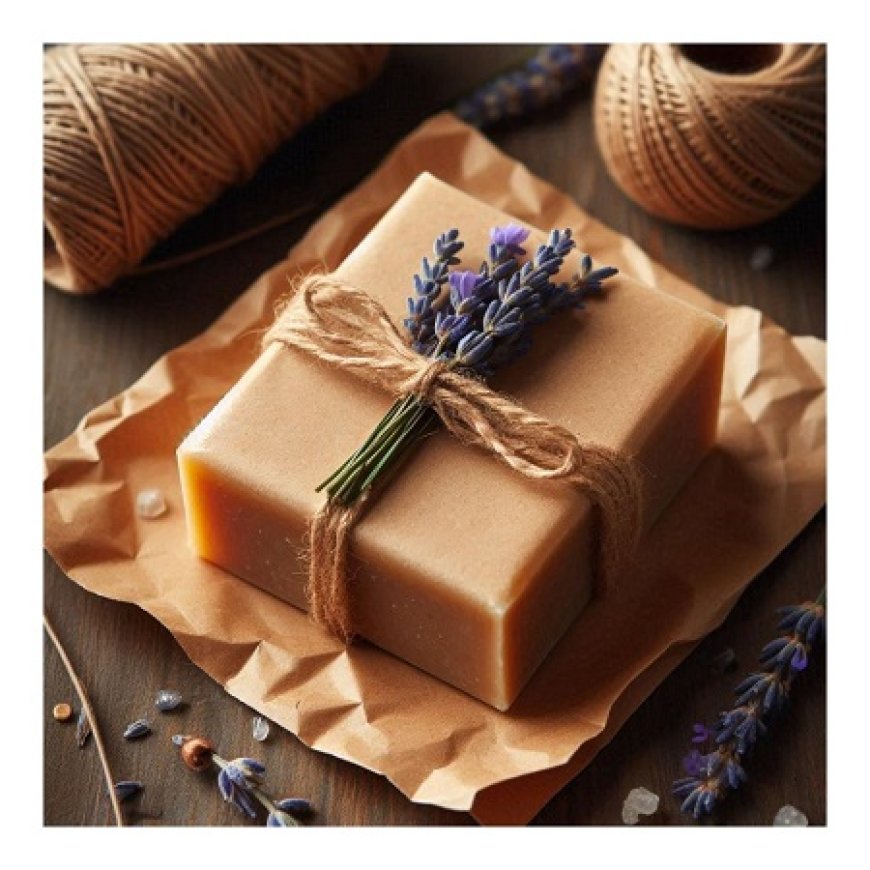Essential Oil Soap Market is Projected to Rise at a CAGR of 5.9% through 2034

A recent study by market research and competitive intelligence company Fact.MR projects that the global essential oil soap market will grow from US$ 2,460 million in 2024 to US$ 4,364.1 million by 2034. Through 2034, the market for essential oil soap is expected to grow at a CAGR of 5.9%.
The market for essential oil soaps is driven by consumer preference for eco-friendly and natural skincare products, which is in line with the global trend toward clean beauty. Companies that prioritize sustainability and openness gain traction in response to consumers’ growing consciousness of environmental effect.
Get a Sample of this Report Here for Further Market Analysis: https://www.factmr.com/connectus/sample?flag=S&rep_id=9484
The industry’s growth trajectory is attributed to the increased popularity of aromatherapy and the therapeutic benefits of essential oils. Essential oil soaps stand out as a holistic and sensory option, attracting customers who are looking for products that promote well-being. This is fueling market expansion.
The market faces challenges in locating premium, ethically sourced essential oils, which affects supply chain stability and production costs. Regulations pertaining to health claims and labeling present additional difficulties, necessitating compliance measures and influencing marketing plans. In addition, the sector faces challenges related to consumers’ price sensitivity because luxury formulations are frequently more expensive.
Essential oil soaps are positioned as crucial parts of personal care regimens due to the growing trend for wellness and self-care routines. Partnerships with wellness professionals and influencers create channels for brand exposure and showcase a market ready for creative approaches. As firms provide specialized options for ingredient preferences and aroma profiles, customization and personalization are becoming more popular since they give a distinctive user experience.
The trend of mixing essential oils with CBD and hemp-derived oils, which have medicinal advantages, is noteworthy. Eco-friendly packaging techniques demonstrate a greater industry commitment to environmental responsibility and are consistent with the beliefs of environmentally conscious consumers. Furthermore, the market is seeing a boom in solid and waterless formulations, which appeal to consumers who are concerned about sustainability and are looking for convenient, environmentally friendly products.
Key Takeaways from the Market Study
- North America’s essential oil soap industry is set to reach US$ 950 million in 2024, claiming a robust 38.6% of the global market.
- East Asia’s essential soap industry anticipates a value of US$ 677 million, securing a 27.5% share in 2024.
- The United States leads the global essential oil soap market with a projected 76.3% share in 2024, driven by consumer interest in natural products and the popularity of aromatherapy. The thriving ecosystem of local artisans and a strong retail sector further propels market growth.
- China is poised to dominate the East Asia essential oil soap industry, holding a substantial 61.2% share in 2024. The country’s rich cultural tradition, cost-effective production, and rising middle class contribute to the widespread adoption of essential oil soaps.
- Liquid soap is expected to dominate the essential oil soap industry with a 41.2% share in 2024.
- The economy price range segment is projected to lead the industry with a 40.1% share in 2024.
Get Customization on this Report for Specific Research Solutions:
https://www.factmr.com/connectus/sample?flag=RC&rep_id=9484
Competitive Landscape
Brands actively position themselves to gain market share in the highly competitive essential oil soap sector. One prominent contender is Dr. Bronner’s Magic Soaps, which is renowned for its dedication to social responsibility and use of fair-trade components. With its handcrafted, vegan, and botanically rich soaps, Rocky Mountain Soap Co. competes, and Plantlife Handcrafted Soaps takes a more straightforward approach with their straightforward, vegetable-based products.
Aura Cacia is an aromatherapy specialist that incorporates therapeutic essential oils into its soap line, in addition to the major players. Thymes specializes in luxury and makes botanical-infused soaps, whereas Mrs. Meyer’s Clean Day promotes environmental awareness by offering cruelty-free, plant-based products. Small-batch craftsmen, soaps with an emphasis on sustainability, and the expanding market for men’s grooming products driven by companies like Duke Cannon are some of the emerging trends.
Key strategies involve data-driven product development, direct-to-consumer channels through eCommerce, and a commitment to sustainability. Collaborations and partnerships contribute to expanded market reach and engagement. In this competitive market, brands navigate challenges and opportunities, composing their unique success stories in the essential oil soap segment.
Key Developments
- In 2022, Dr. Bronner introduced the Pure-Castile Liquid Soap Refill Carton, which is composed of FSC-certified paper with a minimal plastic/aluminum interior. The powdered concentration in the carton may be combined with water to produce liquid soap.
- Sudsy Mama sells homemade, vegan, and palm oil-free soaps wrapped in biodegradable paper sleeves. The company also provides soap dishes, soap savers, and soap bags manufactured from environmentally friendly materials such as bamboo and sisal.
- Companies such as Plant People and Herbivore Botanicals include CBD oil in their soaps to appeal to consumers seeking pain alleviation and relaxation.
- Inspired by the Japanese practice of “shinrin-yoku,” companies such as Rocky Mountain Soap Co. produce soaps with energizing woodsy smells like pine and cedar.

 swatichaudhari
swatichaudhari 










